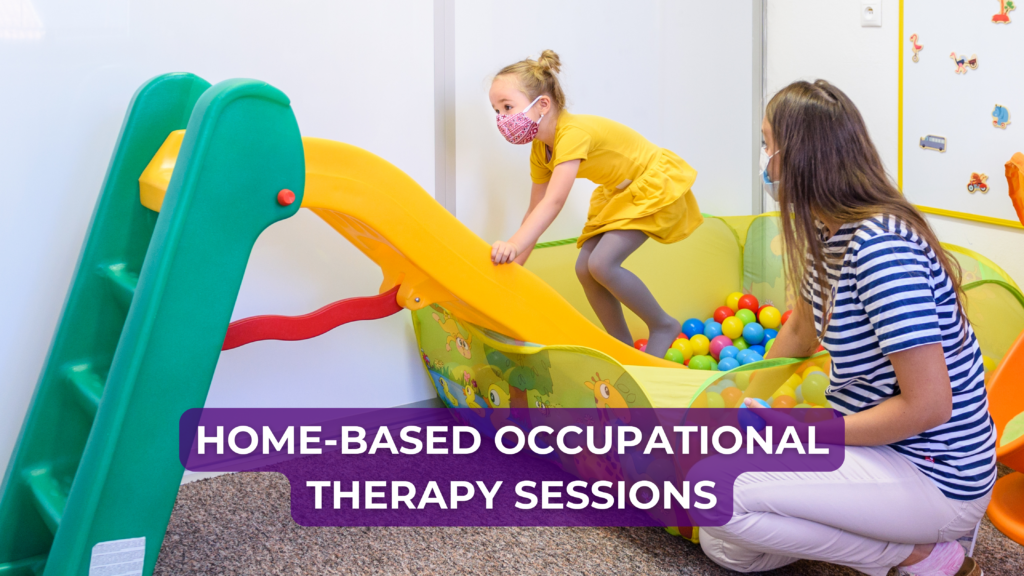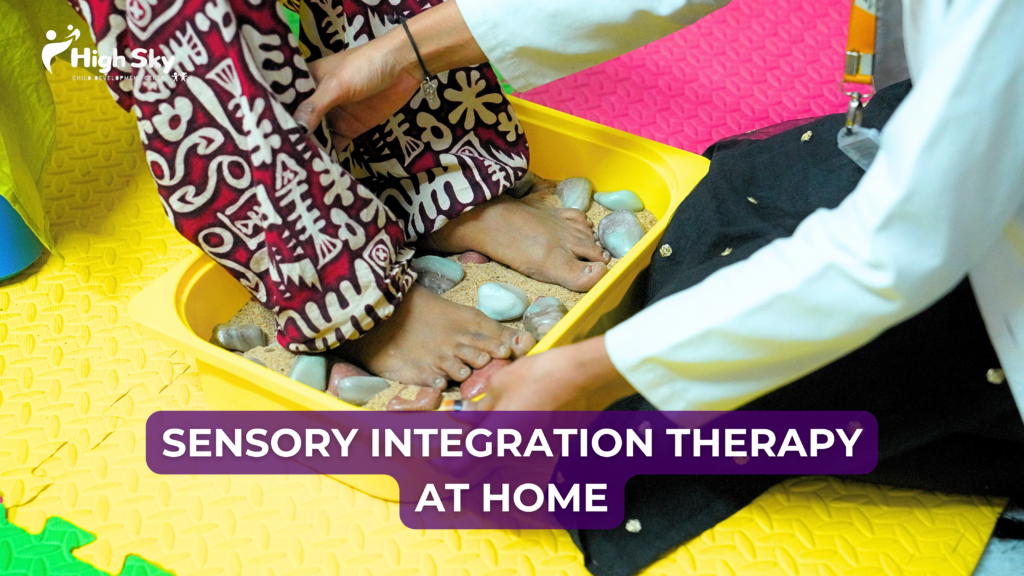Unlocking Potential: Creative Occupational Therapy at Home for Autism You Can Start Today!

Home-Based Occupational Therapy Sessions
Pros of Home-Based Occupational Therapy Sessions:
- Personalized and Individualized Sessions: Therapy sessions at home are tailored to your child’s unique needs. The parent can fully participate in the session and provide feedback about behaviors observed at home to the therapist on a day-to-day basis.
- Ease of Generalization: Skills learned during therapy can be easily incorporated into daily routines within the home environment. Therapy sessions can be scheduled at convenient times for both the child and the caregiver, reducing stress.
- Cost and Time Savings: Eliminates travel costs and saves time for the family.
However, it’s crucial to ensure that home-based therapy is conducted by a certified occupational therapist who evaluates your child using standardized and non-standardized tests while gathering input from parents.
However, it’s crucial to ensure that home-based therapy is conducted by a certified occupational therapist who evaluates your child using standardized and non-standardized tests while gathering input from parents. For more information on the benefits and guidelines of occupational therapy, visit the American Occupational Therapy Association (AOTA).
Home-Based Activities
When we talk about home-based activities, these do not necessarily require the direct presence of an occupational therapist. Instead, they aim to enhance your child’s performance, learning, and regulatory skills. These activities are typically designed to complement ongoing therapy provided in a clinical setting.

Sensory Integration Therapy at Home
- Sensory integration therapy: involves using tools like swings, sensory mats, textured objects, and sensory lighting, which can be costly and challenging to replicate at home. To learn more about the nuances of sensory integration therapy, visit Sensory Integration International, a trusted resource for sensory therapy and techniques.
- Expert Supervision: A certified occupational therapist is trained to monitor your child’s responses to sensory input and adjust activities accordingly. They can balance overloading or underloading sensory inputs to optimize your child’s progress.
- Risk of Misuse: Without proper training, When it comes to sensory integration therapy, it’s important to tread carefully. Sensory integration therapy is designed to optimize your child’s sensory processing skills. However, this form of therapy requires specialized equipment, environments, and expertise, making it less ideal for a home setup sensory integration techniques at home can lead to overstimulation or improper sensory regulation.
Sensory Play vs. Sensory Integration Therapy
While sensory integration therapy is best left to clinical setups, sensory play at home can still be beneficial. Sensory textures, sensory toys, and exploratory activities can be part of your child’s day-to-day routine. However, for structured sensory activities lasting 45 minutes to an hour, consult with your occupational therapist and rely on clinical resources.
For more insights on sensory play and how it can support your child’s development, you may want to check out Autism Speaks, which provides a wealth of information for families dealing with autism spectrum disorder.
Conclusion
Understanding the differences between home-based occupational therapy sessions, home-based activities, and sensory integration therapy is key to making informed decisions for your child. Home-based occupational therapy can be a flexible, effective option when carried out by certified professionals, and home-based activities can reinforce the skills learned in therapy. However, sensory integration therapy requires a clinical setup to ensure safety and efficacy.
By collaborating with therapists, setting realistic goals, and incorporating structured activities at home, you can support your child’s journey toward greater independence and self-confidence. For further educational resources and support, visit The National Autism Association.
Contact a certified occupational therapist today to unlock your child’s potential.

